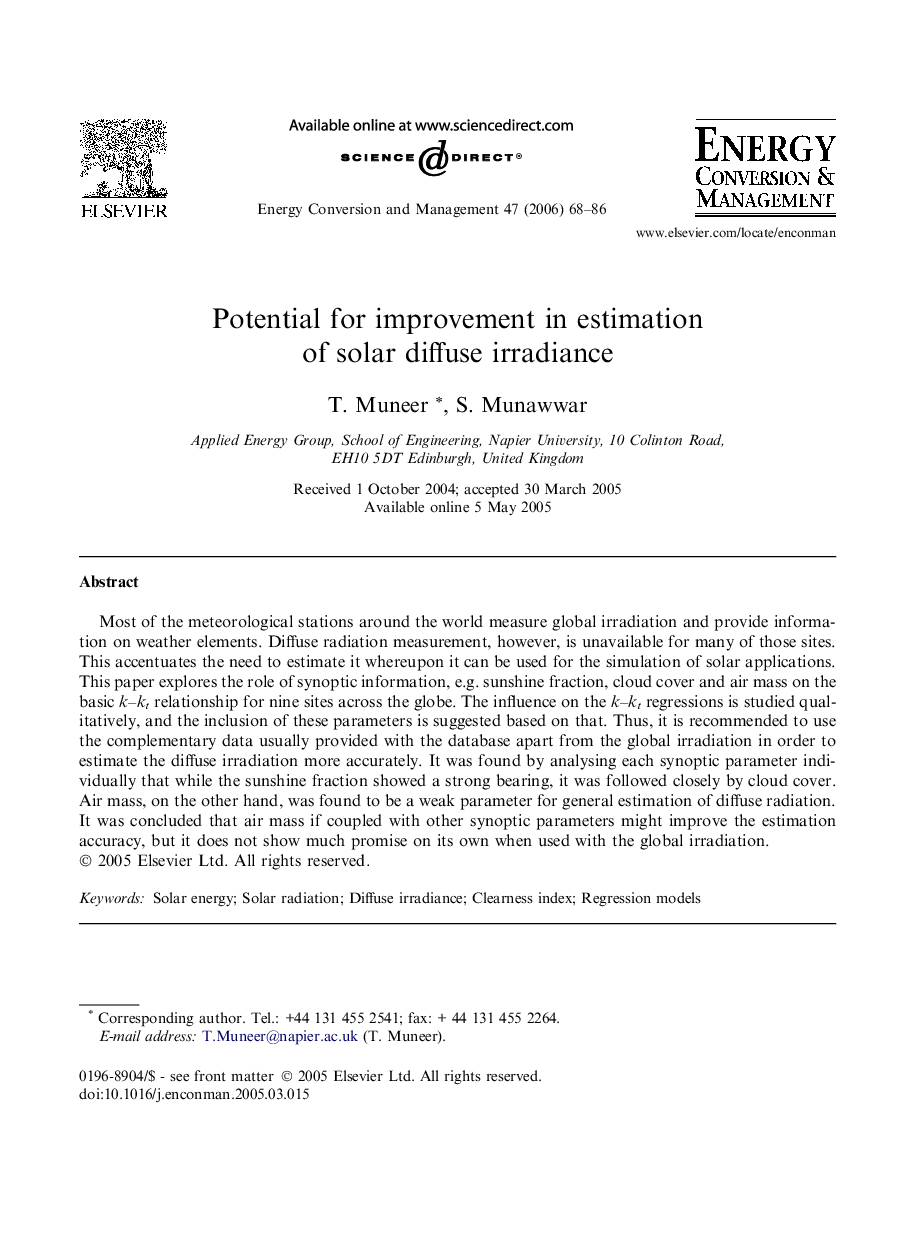| Article ID | Journal | Published Year | Pages | File Type |
|---|---|---|---|---|
| 762570 | Energy Conversion and Management | 2006 | 19 Pages |
Most of the meteorological stations around the world measure global irradiation and provide information on weather elements. Diffuse radiation measurement, however, is unavailable for many of those sites. This accentuates the need to estimate it whereupon it can be used for the simulation of solar applications. This paper explores the role of synoptic information, e.g. sunshine fraction, cloud cover and air mass on the basic k–kt relationship for nine sites across the globe. The influence on the k–kt regressions is studied qualitatively, and the inclusion of these parameters is suggested based on that. Thus, it is recommended to use the complementary data usually provided with the database apart from the global irradiation in order to estimate the diffuse irradiation more accurately. It was found by analysing each synoptic parameter individually that while the sunshine fraction showed a strong bearing, it was followed closely by cloud cover. Air mass, on the other hand, was found to be a weak parameter for general estimation of diffuse radiation. It was concluded that air mass if coupled with other synoptic parameters might improve the estimation accuracy, but it does not show much promise on its own when used with the global irradiation.
